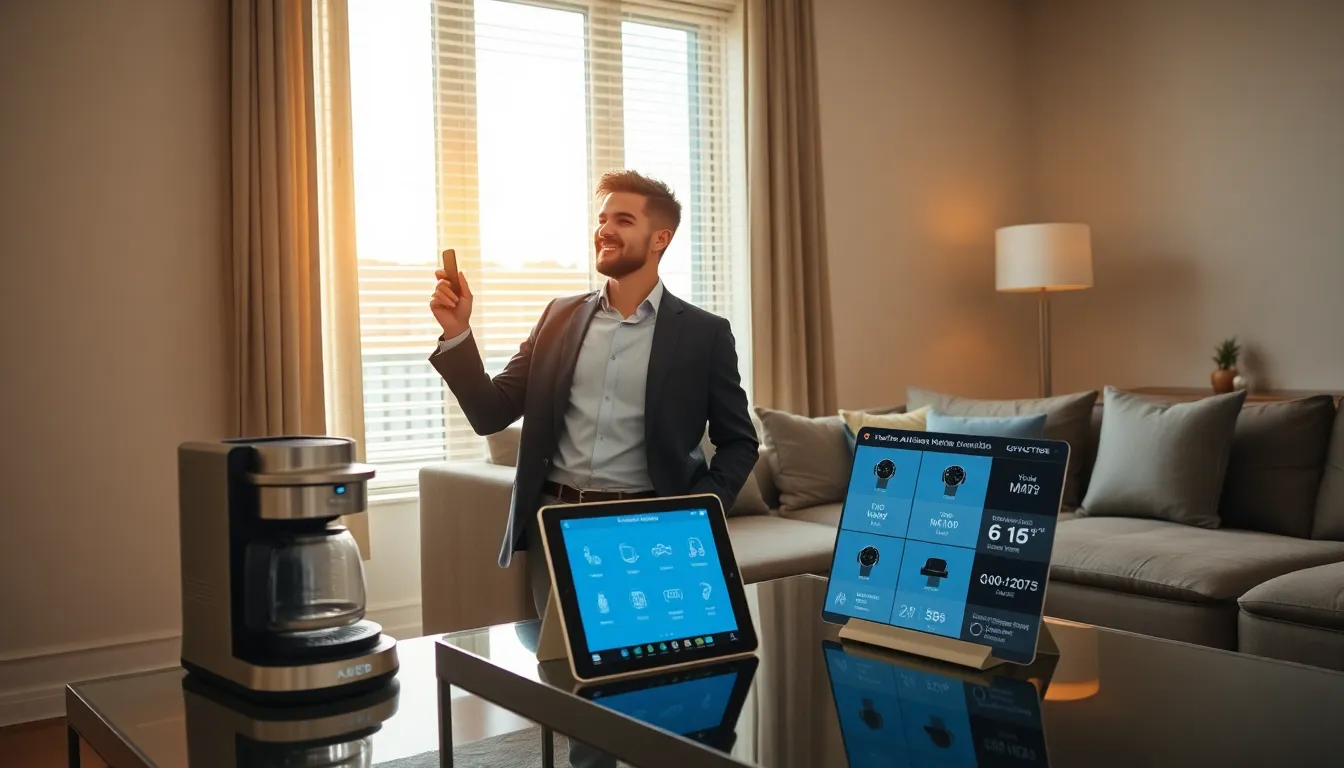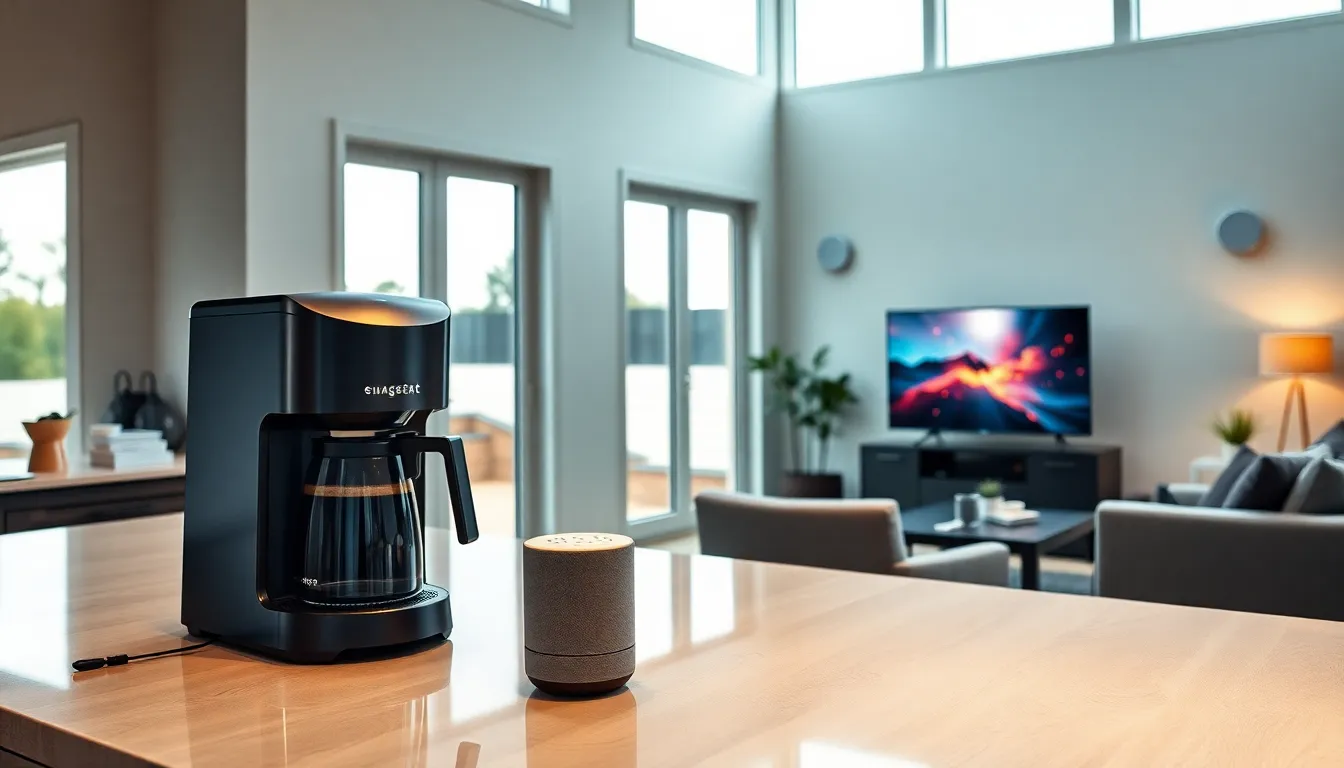Imagine waking up in a home that knows your routine better than your own mother. It adjusts the temperature before you even think about it and starts brewing your morning coffee as soon as your alarm goes off. If this sounds like a dream, welcome to the world of IoT smart homes. In this modern era, homes are becoming more intelligent, and trust me, it’s about to make your life a whole lot easier. Let’s jump into how an IoT smart home is not just a buzzword but a new way of living.
Table of Contents
ToggleWhat Is an IoT Smart Home?

An IoT smart home refers to a residence that utilizes Internet of Things technology to connect its devices. This means that various gadgets are interlinked, allowing them to communicate with each other and work together seamlessly. Think of everything from smart thermostats adjusting based on your preferences to security cameras that alert you when someone is at the door, all controllable from your smartphone.
At the heart of this technology are sensors, software, and other technologies that enable smart devices to connect to the internet. The goal? To enhance comfort, efficiency, and security. Imagine telling your home to switch off the lights without getting off the couch. This is just a taste of what an IoT smart home can offer.
Key Components of an IoT Smart Home
There are several essential components that make an IoT smart home tick:
Smart Hubs
These are the brains behind the operation. Hubs connect various smart devices into one central system, allowing for easier control and communication.
Smart Devices
From smart lights and thermostats to refrigerators that can remind you to buy milk, these gadgets are what bring your home to life. They can adjust automatically or via your smartphone.
Sensors
Smart sensors detect conditions within your home. Want to know if a window is open? Sensors can keep you updated. They help in security and energy efficiency.
Mobile Applications
Apps allow users to monitor and control their devices. They are often user-friendly, enabling settings adjustments no matter where you are.
Benefits of an IoT Smart Home
The advantages of an IoT smart home are numerous and compelling:
Increased Energy Efficiency
Smart thermostats learn your schedule, optimizing heating and cooling. This means significant savings on energy bills.
Enhanced Convenience
Imagine a life where everything can be controlled through a single application on your smartphone. Want to dim the lights or lock the door from your couch? Done.
Improved Security
Smart security systems offer features such as remote access and real-time alerts. Keeping your home safe becomes hassle-free with these advancements.
Better Home Management
IoT smart homes provide useful insights into your energy use, helping you manage expenses effectively.
Health Monitoring
Some smart homes even integrate health monitors that track air quality or suggest changes to improve your well-being.
How to Set Up Your IoT Smart Home
Setting up your IoT smart home can feel overwhelming, but it doesn’t have to be. Here’s a step-by-step guide:
1. Determine Your Needs
First, assess what you want your smart home to achieve. Is energy efficiency your top priority, or are you more concerned with security?
2. Choose a Smart Hub
Pick a hub that is compatible with various devices you plan to use. Popular options include Amazon Echo and Google Nest.
3. Select Your Devices
Based on your needs, start with a few essential devices, such as smart plugs, lights, or a thermostat. You can expand later.
4. Connect Devices to the Hub
Follow the instructions for each device to connect them to your hub. Most setups are user-friendly.
5. Download the Relevant Apps
Many devices come with their apps. Download these to manage settings.
6. Customize Settings
Take the time to adjust settings according to your preferences. Enable notifications for important alerts.
Popular IoT Smart Home Devices
When it comes to IoT smart home devices, some are more popular than others. Here’s a look at the crowd favorites:
Smart Thermostats
Devices like the Nest Learning Thermostat automatically adjust to your habits, ensuring comfort while saving energy.
Smart Security Cameras
Brands like Ring and Arlo offer features such as night vision, two-way audio, and alerts that keep homeowners informed.
Smart Lights
Philips Hue and LIFX allow you to change lighting colors and adjust brightness, all from your smartphone.
Smart Plugs
Devices like Wemo and TP-Link let you control any appliance from anywhere, great for coffee machines or fans.
Voice Assistants
Amazon Alexa and Google Assistant can control various devices via voice commands, making them invaluable in a smart home.
Challenges and Considerations in IoT Smart Homes
While IoT smart homes bring incredible benefits, they aren’t without challenges:
Security Risks
With everything connected to the internet, smart homes can be vulnerable to cyberattacks. It’s essential to invest in security measures.
Compatibility Issues
Not all devices are compatible with every hub, leading to potential frustrations. Always check before purchasing.
Potential Costs
Setting up a fully integrated system can be costly. Budgeting wisely is crucial.
Technical Know-How
Some users may find technology daunting. Consider starting simple before expanding into more sophisticated setups.
The Future of IoT Smart Homes
The future looks promising for IoT smart homes. As technology advances, expect:
More Interconnected Devices
Greater integrations mean seamless communication between devices, enhancing user experience.
Enhanced Energy Management
Smart homes will likely feature advanced algorithms to optimize energy use in real time.
AI Integration
As AI develops, smart homes will become even smarter, learning routines and preferences to improve functionality.
Broader Adoption
As prices drop and technology becomes more accessible, expect wider adoption among various demographics.






